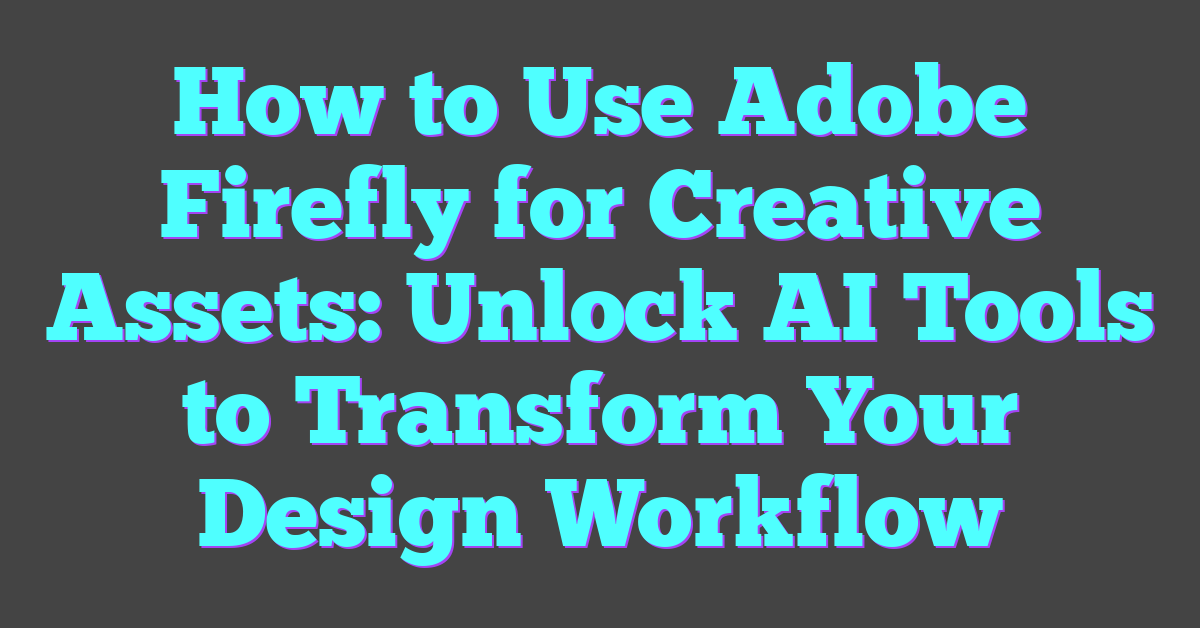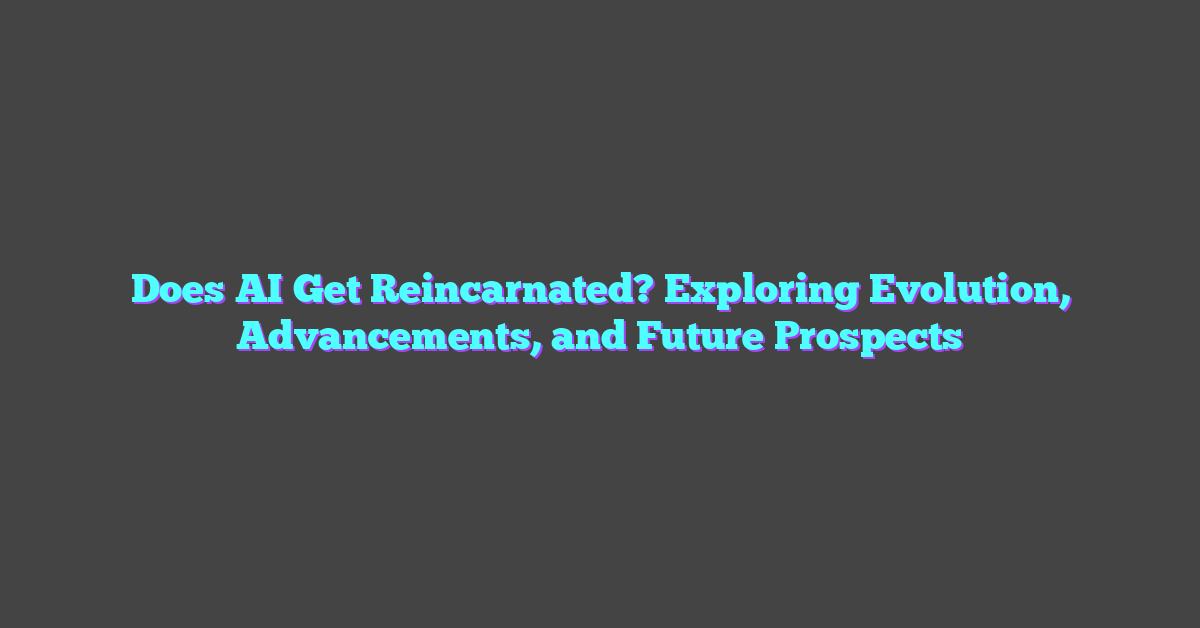Creativity just got a serious upgrade with Adobe Firefly, and I couldn’t be more excited to dive in. Whether you’re a seasoned designer or just someone who loves experimenting with visuals, Firefly opens up a world of possibilities for creating stunning assets in no time. It’s all about bringing your ideas to life with ease and a touch of magic.
I’ve always believed that the right tools can make or break a creative process, and Firefly feels like one of those game-changers. From generating unique designs to enhancing your projects effortlessly, it’s designed to spark your imagination and simplify the way you work. If you’re curious about how to make the most of this powerful tool, you’re in the right place! Let’s explore how Firefly can transform your creative workflow.
What Is Adobe Firefly?
Adobe Firefly is a collection of AI-powered tools designed specifically for content creators. It integrates machine learning models to generate and transform creative assets like images, text effects, and illustrations. By leveraging generative AI, Firefly provides unmatched efficiency in producing visually impressive results.

What sets Firefly apart is its focus on usability for creators at all skill levels. It incorporates intuitive interfaces that require minimal technical knowledge. For instance, prompts are translated into unique designs, making tasks like creating stunning visual effects or mockups seamless.
Adobe has trained Firefly using Adobe Stock images and other openly licensed content to ensure high-quality, commercially safe outputs. This approach protects intellectual property while ensuring consistent results. As a machine learning enthusiast, I find it fascinating how Adobe has tailored this AI to balance creativity with ethical usage.
From generating textures to transforming handwritten sketches into polished designs, Firefly opens up opportunities previously limited to advanced graphic tools. It’s an exciting advancement for anyone passionate about integrating AI into creative workflows.
Key Features of Adobe Firefly
Adobe Firefly combines the power of artificial intelligence with creative tools to revolutionize content creation. Its intuitive design and versatile applications have made it a standout solution for generating professional-grade assets.
AI-Powered Tools
Firefly leverages robust machine learning models to automate and simplify asset creation. It enables tasks like generating unique images, applying advanced text effects, and crafting intricate designs. The AI behind Firefly uses training data from Adobe Stock and licensed content, ensuring commercial safety and ethical integrity. For instance, users can input textual descriptions to create detailed visuals or transform rough drafts into refined outcomes. Its ability to assist with precision enhances productivity across diverse creative needs.
Customization Options
Firefly prioritizes flexibility by allowing users to tailor outputs to fit their vision. Creators can adjust style, color palettes, texture details, and even typography parameters. This level of control makes it easier to produce assets aligned with specific brand requirements or personal preferences. For example, layering edits or fine-tuning effects ensures each project maintains individuality. By offering adjustable settings, Firefly adapts to both novice and advanced creators without compromising quality.
Seamless Integration with Adobe Ecosystem
Firefly integrates directly with Adobe’s suite, bridging AI capabilities with tools like Photoshop, Illustrator, and Premiere Pro. This interconnected workflow streamlines asset management and accelerates editing processes. For example, users can generate assets in Firefly and immediately incorporate them into larger Adobe projects without reformatting. Whether enhancing videos or designing marketing campaigns, this compatibility reduces friction, saving time for creators.
Getting Started With Adobe Firefly
Adobe Firefly combines the power of AI and machine learning to redefine content creation. As someone passionate about these technologies and their real-world applications, I find Firefly to be an inspiring tool for transforming ideas into tangible creative assets.
System Requirements and Installation
To use Adobe Firefly effectively, ensure your system meets minimum requirements. It runs on the latest versions of modern web browsers such as Chrome, Firefox, or Edge. For Adobe Creative Cloud integration, confirm that your operating system supports applications like Photoshop and Illustrator, which typically require Windows 10 (64-bit) or macOS 11 or later.
Accessing Firefly is simple. Start by signing in with your Adobe ID at the Adobe Firefly webpage. If you have an Adobe Creative Cloud subscription, Firefly integrates directly, syncing assets across tools. No advanced technical setup is required—just ensure a stable internet connection for real-time AI processing.
Setting Up Your Workspace
A well-organized workspace optimizes creative flow. When accessing Firefly, navigate its clean, intuitive interface. File collections, text effects, and image generators are easily accessible through labeled menus.
For collaborative workflows, sync your Firefly projects to Adobe Creative Cloud libraries. This setup allows seamless asset sharing across tools like Illustrator and Premiere Pro, saving time and maintaining consistency in your projects. Enable AI-powered features like generative previews to test iterations quickly without committing major changes.
Keep assets structured by creating folders for images, typography, or effects. For machine learning optimizations, use metadata tagging to improve content retrieval and track design versions effectively.
Using Adobe Firefly for Creative Assets
Adobe Firefly leverages advanced AI methodologies to transform creative workflows. As both an AI enthusiast and content creator, I find it fascinating how Firefly combines machine learning and user-driven design to empower creators of all levels.
Generating Images Using AI
Firefly uses generative AI to create original image assets with remarkable precision. By entering prompts, users can generate high-quality visuals tailored to specific themes or styles. For example, a prompt like “futuristic cityscape at night” results in a vivid AI-generated image aligned with the description. Firefly’s algorithms are trained on curated Adobe Stock datasets, ensuring outputs are both creative and commercially viable. I appreciate how the system balances creativity with ethical content generation.
Creating Unique Graphic Designs
Firefly streamlines graphic design by offering tools to generate patterns, textures, and vector graphics. Through its customization options, users can modify shapes, colors, or layers, making designs more personal. For instance, I can create geometric patterns for web backgrounds by adjusting line weights and palettes within seconds. These AI-driven adjustments enhance workflow efficiency and allow me to replicate designs across various mediums like social media and branding materials.
Enhancing Photos and Illustrations
Firefly transforms existing assets by improving photo quality and reimagining illustrations. Its super-resolution feature upscales raster images without compromising detail, ideal for print materials or digital displays. Additionally, I use its style transfer capabilities to apply custom artistic effects to my photos, instantly creating new visual narratives. For example, converting a realistic photo into a watercolor-inspired artwork adds creativity to projects while preserving the original concept.
Tips and Tricks for Maximizing Productivity
Optimizing Adobe Firefly’s features boosts efficiency in creating high-quality assets. Here’s how to make the most of its capabilities.
Leveraging Built-In Templates
Firefly provides a variety of templates customized for different projects. Use these templates for tasks like designing posters, creating social media visuals, or developing brand assets. Start by selecting a template that matches your project’s goals. For example, for a marketing campaign, default templates include pre-designed layouts that you can customize by changing text, colors, or adding images. Selecting a template reduces manual design efforts, letting me focus on refining the creative elements.
Exploring Advanced AI Capabilities
Firefly’s advanced AI models enable precise control over asset generation. Features like prompt-based image creation and intelligent object detection accelerate workflows. When generating images, I experiment with detailed prompts to achieve visuals tailored to specific themes, such as “vintage-inspired logos” or “fluid abstract patterns.” AI-powered enhancements, like adding realistic textures or transforming vector shapes, elevate designs without requiring manual inputs. Testing various AI-driven adjustments ensures both creative consistency and improved end results.
Collaborating With Team Members
Firefly integrates with Creative Cloud to support seamless collaboration. Shared libraries store assets, allowing team members to access, edit, and version content. When working on group projects, I use metadata tagging and organized folders to maintain project flow and ensure asset traceability. Additionally, provision for synchronized updates ensures everyone works with the latest design iterations. Features like AI-assisted draft suggestions also streamline team feedback by providing polished options to refine together.
Conclusion
Adobe Firefly has truly redefined what’s possible in the world of creative design. Whether you’re crafting visuals for a personal project or managing assets for a team, its intuitive tools and AI-driven features make the entire process smoother and more enjoyable.
I love how it bridges the gap between creativity and technology, giving creators of all skill levels the freedom to bring their ideas to life. With its seamless integration into Adobe’s ecosystem, Firefly feels like a natural extension of the tools we already know and trust.
If you’re ready to elevate your creative workflow and explore new possibilities, Firefly is definitely worth diving into. It’s not just a tool—it’s a companion for your creative journey.




